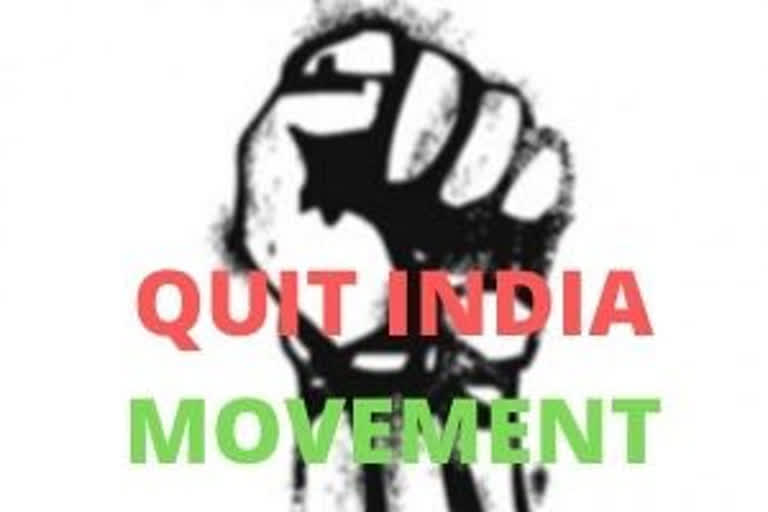New Delhi: The "Quit India Movement", was launched by Mahatma Gandhi on August 8,1941, during the Second World War, demanding an end of British Rule in India.
It was an important milestone in the Indian freedom struggle. Under the leadership of Mahatma Gandhi, people across India came together to uproot imperialism. On this day in 1942, Gandhi gave the clarion call of "Do or Die" to all Indians to drive away Britishers from the country. The movement had begun from Gawalia Tank in Mumbai. This day is also observed as August Kranti Day every year.
On July 4, 1942, Indian National Congress passed a proposal to drive away the Britishers out of the country. At that point, party leader C Rajagopalachari left the party but Nehru and Maulana Azad decided to endorse Gandhi's call till they achieved victory. Further, on August 8, 1942, the resolution of Quit India Movement was passed in the Bombay session by the All India Congress Committee.
However, the "Quit India Movement" didn't turn out to be a success. The Britishers responded to the movement by imprisoning almost the entire INC leaders including Mahatma Gandhi, Jawaharlal Nehru, and Vallabhbhai Patel without any trials and most of them were kept imprisoned till the end of the second world war in 1945.
With the arrest of the main leaders, the Quit India movement turned violent.
Also read: Rising Krishna river traps shepherd and his flock
Due to weak coordination and lack of clear action plan, the movement wore out by 1943 and failed to have much impact on the Allied war effort. Despite its failure, the Quit India movement is considered significant as it made the British government realize that India was ungovernable in the long run.
A lot of women leaders also participated in Quit India Movement. Usha Mehta was one of the prominent workers of the Congress Radio Conspiracy Case. She set up a radio transmitter, called the 'Voice of Freedom' to disseminate information about the war for freedom. Usha and her brother persisted with their task of broadcasting until their arrest on November 12, 1942. She was sentenced to four years jail.
Sucheta Kriplani was another prominent woman leader of the Quit India Movement. She established contacts with groups active across India and encouraged them to continue non-violent activity. In 1944 she was captured and lodged in Lucknow jail as a 'dangerous prisoner.'
Also read: NGT directs DDA to file response to plea alleging pollution in lake
A doctor by profession, Sushila Nayyar was younger sister of Gandhi's secretary, Pyarelal. She became personal physician of Kasturba and Gandhi. Further, she was imprisoned with Kasturba, Gandhi and Mahadevbhai in Aga Khan Palace jail in 1942.
Rajkumari Amrit Kaur belonged to the royal family of Kapurthala State. She came under the influenced of Gandhi and became one of his followers. She participated in Salt Satyagraha and Quit India Movement. Her main fields of activity were female education and upliftment of the Harijans. She was president of All India Village Industries Association. During the movement Rajkumari Amrit Kaur played a leading role in organizing processions and protest meetings. She was most active during the Quit India movement in 1942.
Moreover, on the 78th anniversary of Quit India Movement, President Ram Nath Kovind on Sunday remembered millions of freedom fighter who sacrificed their lives for India's Independence.
Inputs from ANI



